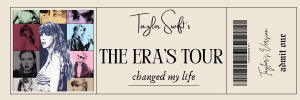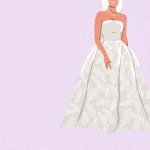WYRDO is a Glass column obsessed with finding the weirdest kinds of literature available! From not-quite-infinite poetry to unbound books and beyond, this is the place for the most deranged writing you’ve (probably) never heard of. This edition is about HOUSE OF LEAVES.

House of Leaves is a weird book. It’s ergodic, postmodern, epistolary, and thirty other adjectives only used by wankers and nerds (me). It’s the kind of book that has academic papers written about it, and those papers have sections titled, “Postmodern Science, the Hypercube and Parallel Dimensions, and the Hypertext”. Seriously, that’s an actual chapter in this Buffalo State College paper.
God, I love shit like this.
According to legend, otherwise known as The Guardian, the book began life as “a messy bundle of papers that circulated in an underground scene”. At first I doubted this claim, due to the book’s publication in line with Haunted, a companion album by Poe (the author’s sister). However, thanks to a helpful member of Danielewski’s forum, Johnny Truant, I was able to source the claim to a Firsts Magazine article about the first edition publication of the novel.
I normally wouldn’t tell you about my research process, but it’s about to be a little funny, so there you go. Also, it annoys me that the claim goes unsourced in The Guardian.
Part of my description for Wyrdo as a column reads, “the most deranged writing you’ve (probably) never heard of.” Let’s be real though, this is the most famous weird book ever written. If you’re a freak for the weird, you’ve almost definitely heard of it.
If you haven’t heard of it, I’ll make this as confusing as possible:
House of Leaves is a novel written by Mark Z. Danielewski (pronounced Danielefski), if you believe the front cover. Turn to the inside cover, however, and you’ll find these words:
House of Leaves
by
Zampanò
with introduction and notes by
Johnny Truant
This should be confusing to you for two reasons: firstly, because that is not the same as the front cover of the book. When I noticed this, I flipped back to the cover just to check I wasn’t stupid. Secondly, you should be confused because the forum poster who answered my question earlier was named Johnny Truant.
Cards on the table, Zampanò and Truant are the fictional authors of House of Leaves. The book is a compilation of both their writings, as Truant finds and interprets Zampanò’s transcription of the events of The Navidson Record, a film about the Navidson family finding a dark, infinite hallway in their house and the events thereafter.
Was that too much?
Too bad motherfucker, because this book is an infinitely layered labyrinth of characters, plot, and contradictions. Reading it is like descending into a maddening fever dream because you can never trust a claim, believe a word, or be sure you’re even holding the book the right way up.
That’s right, remember that word from the first paragraph, ergodic? Seriously, do you? I made fun of it then, but we’re using it now. Get definitioned:
“In ergodic literature, nontrivial effort is required to allow the reader to traverse the text. If ergodic literature is to make sense as a concept, there must also be nonergodic literature, where the effort to traverse the text is trivial; with no extranoematic responsibilities placed on the reader except (for example) eye movement and the periodic or arbitrary turning of pages.” – Espen J. Aarseth, Cybertext – Perspectives on Ergodic Literature, 1997
The task asked of the reader by House of Leaves – to read introductions, notes and appendices in conjunction with the Navidison Record in an attempt to parse truth – is already nontrivial. However, Danielewski (or Zampanò and Truant, if you want) have gone further to alter the format of the text itself. In places, text is placed in irregular columns, sideways, backwards, or upside down. Some words are placed in blue-outlined boxes with obscured text. Some pages contain a single word. Some words are printed in colour, most notably the word house is always printed in blue; even in other languages.
There’s more. There’s always more. That’s kind of the point. Danielewski’s labyrinthine tome mimics the hallway from the Navidson family’s house: it resists interpretation, and yet it is interpreted anyway; it is infinite, inextricable from itself, and you can easily become lost in it.
In a simple yet effective piece for WIRED, John Brownlee writes that the book is intentionally impossible to read in the same way twice, and that reading it that way misses the point entirely.
“House of Leaves is meant to be an impossible space: if you don’t explore it like one, the book loses a great deal of its power.” – John Brownlee, WIRED
Writing this article was a bit like being lost in that same impossible space. There are a lot of threads to this story in real life, too. I want to return to this topic, to speak about the book’s companion album by Poe, and about a level made for Doom II based on the book (no, seriously). What about the half-finished sequel tv series we only got a few scripts for? Maybe there’ll be time for a dozen appendices and footnotes to this article. In Truant’s style, I might add an addendum to this article if I ever figure out why he’s answering questions about House of Leaves’ publication history on Danielewski’s web forum.
Until then… go read something weird.
Join me in the next WYRDO column for a doomed attempt to understand Cain’s Jawbone.
Brock is an experimental fiction writer based in Meanjin. His writing writhes in the gaps between weird and weirder, with an emphasis on eutopianism. He can be found at @scholteyyy in Instagram or at brockscholte.com







